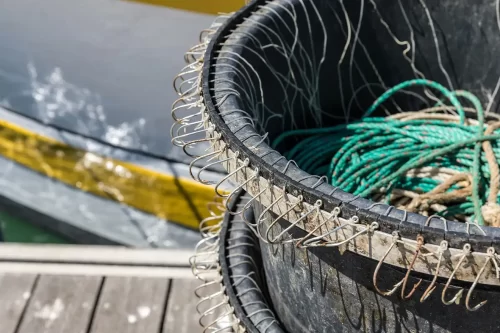It’s been just over five months since Global Fishing Watch launched publicly, and this week, we hope to make another splash by not just mapping global fishing activity, but by providing an unprecedented view of very specific activity by a very specific class of vessels around the world.
Today, at the Economist World Ocean Summit in Indonesia, Brian Sullivan, Google’s lead for Global Fishing Watch, is presenting the results of our new analysis that produced the first-ever global footprint of transshipment. We are releasing our data and analysis of these transshipments today in a free report titled The Global View of Transshipment: Preliminary Findings. [note, this report was updated 8/17]
At the same time, our partners at Oceana are publishing a complementary report exposing the global scale of transshipment and its potential for facilitating suspicious behaviors like illegal fishing and human rights abuses. In the commercial fishing industry, large refrigerated cargo ships collect catch from multiple fishing boats and carry it back to port. This practice of transshipment enables fishing vessels to continue fishing, which reduces fuel costs for fishing vessels and gets the catch to port more quickly. It also leaves a wide open door for potential illegal activity–from disguising illegal catch by mixing it with legitimate catch, to smuggling drugs and facilitating slave labor on fishing vessels that remain at sea for months or years at a time.
That’s why it is illegal in many cases, and it is why the ability to monitor refrigerated cargo vessels and identify when and where transshipment happens can play a significant role in reducing illegal activity at sea.
Our analysis of 21 billion AIS messages from ships on the ocean between 2012 and 2016 identified 90 percent of the world’s reefer vessels (794 reefers compared to the 882 identified in 2010 according to the U.S. Central Intelligence Agency World Factbook.) When we applied the new algorithm we developed to finding telltale transshipment behavior, such as drifting long enough to receive a transfer of catch, the results revealed 86,490 instances of “potential transshipments.” Drilling down through these 86,490 occurrences, we identified 5,065 confirmed rendezvouses between a reefer and a fishing vessel. We have labeled these “likely transshipments.”
In the new report, we outline our methodology for developing the algorithm and identifying important patterns in the data such as clustering of transshipment activity along the Exclusive Economic Zones (EEZ’s) of certain countries, and a lower prevalence of transshipment around countries with comparatively good management, such as in North America and Europe, when compared to regions beset by IUU fishing.
The data also show us that transshipment is clearly a pan-national problem that involves ships registered to diverse array of countries operating on the high seas and off-shore waters around the world and far from their home ports.
This preliminary report represents our first steps toward increasing transparency of the previously hidden practice of transshipment at sea. There is more work ahead for us as we continue to mine our data for still more data to mine, and more.
Learn about a companion report released today by our partners at Oceana.
Read about how our partners at SkyTruth captured satellite images of a Thai reefer in a likely transshipment in a remote part of the Indian Ocean.


